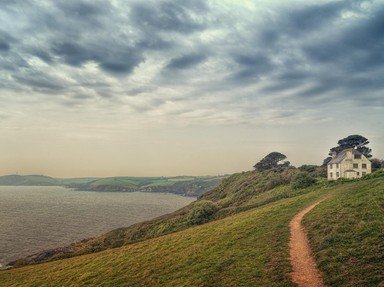Quiz Answer Key and Fun Facts
1. If a walker was to cover one square mile of Dartmoor each day, approximately how long would it take him or her to cover Dartmoor's entire area?
2. Of the fourteen major named rivers that rise on Dartmoor, what is different about the rivers Taw and Okement?
3. Approximately 1% of Dartmoor's total area is occupied by eight of these crucial installations. What are these features?
4. The towns of Tavistock, Plympton, Ashburton and Chagford are still known today as the Devon Stannaries or the Stannary Towns. From what natural commodity do these towns take this name?
5. Whilst driving over Dartmoor, we need to be aware that livestock and wildlife are not confined by fencing. Of the following, which animal would you be most likely to encounter while on the moor?
6. Whilst out walking on Dartmoor, what might you expect to see if you were to encounter a field of 'clitters'?
7. Each year since 1960, many thousands of young people have been attracted to Dartmoor for the purposes of participating in 'The Ten Tors'. What is, or are, the Ten Tors?
8. Approximately thirty-two thousand acres of Dartmoor's total land area has been set aside for a specific purpose. Which department of the UK government holds stewardship over this land?
9. For many years Dartmoor Prison was renowned for housing some highly dangerous convicts due to its remote location. However, the prison was originally built during the early 19th century to accommodate survivors from the ill-fated Spanish Armada.
10. During the Great Thunderstorm of 1638, the Dartmoor village of Widecombe-in-the-Moor was reputedly visited by whom?
Source: Author
SisterSeagull
This quiz was reviewed by FunTrivia editor
Tizzabelle before going online.
Any errors found in FunTrivia content are routinely corrected through our feedback system.

